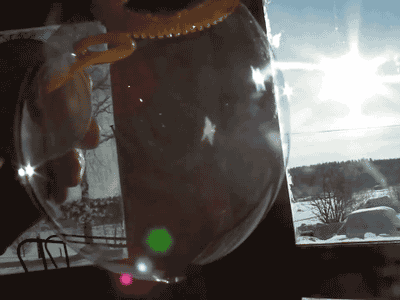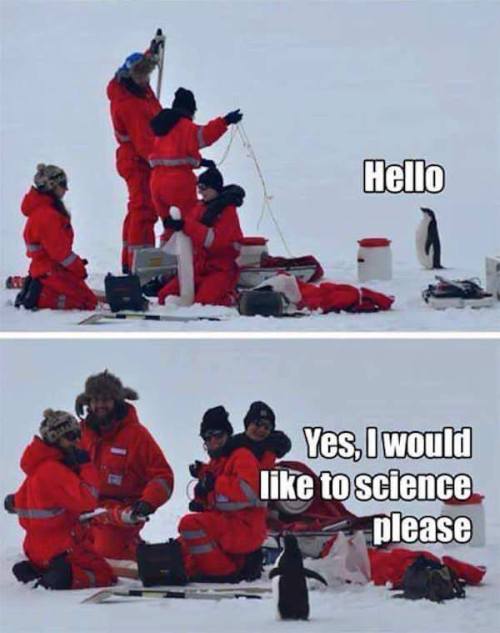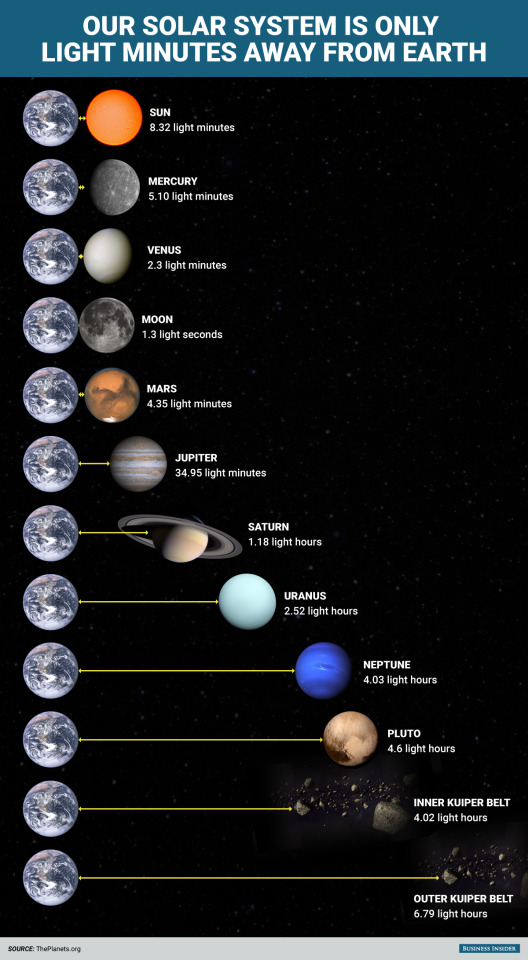When You Try To Get Kids Excited In STEM:
When you try to get kids excited in STEM:

More Posts from Smartler and Others
If Earth had Saturn’s Rings
From an excellent post by Jason Davis
From Washington, D.C., the rings would only fill a portion of the sky, but appear striking nonetheless. Here, we see them at sunrise.

From Guatemala, only 14 degrees above the equator, the rings would begin to stretch across the horizon. Their reflected light would make the moon much brighter.

From Earth’s equator, Saturn’s rings would be viewed edge-on, appearing as a thin, bright line bisecting the sky.

At the March and September equinoxes, the Sun would be positioned directly over the rings, casting a dramatic shadow at the equator.

At midnight at the Tropic of Capricorn, which sits at 23 degrees south latitude, the Earth casts a shadow over the middle of the rings, while the outer portions remain lit.

via x
that one sin.
you know that sin?
You know. That one sin.
The one that you never tell anybody. The one that you’re afraid to tell people, afraid of their judgement, because obviously if they knew they would condemn you. The one that you’ve unwillingly hoarded to yourself, played close to your chest, not letting anyone have so much as a peek. That sin, the one that not even your parents or your best friends or anybody else knows about.
That. One. Sin.
I don’t know when it started. Maybe you were younger, or maybe you were older. Maybe you didn’t know it was wrong, at first, or maybe you knew it was wrong but you did it anyways. Maybe you were pressured into it, felt like you didn’t have a choice. Maybe you were indulging yourself with something that you’d always wanted to try but never had the opportunity to.
And now you look back, and you feel sick. You wish it had never happened in the first place. You wish that you hadn’t been so stupid. You wish that you had listened to whoever had warned you away from it. It wasn’t supposed to be like this, eat this much of you up—it wasn’t supposed to go any further than that first try.
It hurts. You feel dirty. You wonder how God could ever love someone as horrible as you. As dirty as you. As broken as you.
Let me tell you something:
That’s a lie.
Because, secret sin or not, if you have Jesus then you are God’s child.
You have been made clean, whole.
Jesus’ blood is bigger than your sin.
Jesus paid it all.
God loves to forgive.
God loves to heal.
God loves to love.
Don’t hide from him. Run to him. Let him welcome you back.







Tumblr Valentines - The Love God version.
Only on tumblr


Wildest Dreams (Piano Instrumental)
Credit to Molotov Cocktail

Here’s how ridiculously fast we could visit everything in the solar system if we traveled at the speed of light.
What Are the Bright Spots on Ceres?

Dwarf planet Ceres has more than 130 bright areas, and most of them are associated with impact craters. Now, Ceres has revealed some of its well-kept secrets in two new studies in the journal Nature, thanks to data from our Dawn spacecraft.
Two studies have been looking into the mystery behind these bright areas. One study identifies this bright material as a kind of salt, while the other study suggests the detection of ammonia-rich clays.
Study authors write that the bright material is consistent with a type of magnesium sulfate called hexahydrite. A different type of magnesium sulfate is familiar on Earth as Epsom salt.

Researchers, using images from Dawn’s framing camera, suggest that these salt-rich areas were left behind when water-ice sublimated in the past. Impacts from asteroids would have unearthed the mixture of ice and salt.
An image of Occator Crater (below) shows the brightest material on Ceres. Occator itself is 60 miles in diameter, and its central pit, covered by this bright material, measures about 6 miles wide. With its sharp rim and walls, it appears to be among the youngest features on the dwarf planet.

In the second nature study, members of the Dawn science team examined the composition of Ceres and found evidence for ammonia-rich clays. Why is this important?
Well, ammonia ice by itself would evaporate on Ceres today, because it is too warm. However, ammonia molecules could be stable if present in combination with other minerals. This raises the possibility that Ceres did not originate in the main asteroid belt between Mars and Jupiter, where it currently resides. But instead, might have formed in the outer solar system! Another idea is that Ceres formed close to its present position, incorporating materials that drifted in from the outer solar system, near the orbit of Neptune, where nitrogen ices are thermally stable.

As of this week, our Dawn spacecraft has reached its final orbital altitude at Ceres (about 240 miles from the surface). In mid-December, it will begin taking observations from this orbit, so be sure to check back for details!
ake sure to follow us on Tumblr for your regular dose of space: http://nasa.tumblr.com
Blood, Part 1 - True Blood: Crash Course A&P #29
Now that we’ve talked about your blood vessels, we’re going to zoom in a little closer and talk about your blood itself. We’ll start by outlining the basic components of blood – including erythrocytes, leukocytes, platelets, and plasma – as well as the basic process of hemostasis that stops bleeding, and how antigens are responsible for the blood type that you have. By the end of this episode, you should be totally prepared for your next blood drive.
Table of Contents
The Basic Components of Blood 2:30
Erythrocytes, Leukocytes, Platelets, and Plasma 3:00
The Basic Process of Hemostasis 4:45
How Antigens Are Responsible For Your Blood Type 6:21

-
 carolca-blog liked this · 7 years ago
carolca-blog liked this · 7 years ago -
 dangitdunsparce liked this · 9 years ago
dangitdunsparce liked this · 9 years ago -
 the-empty-northern-hemisphere liked this · 9 years ago
the-empty-northern-hemisphere liked this · 9 years ago -
 captainshakespear reblogged this · 9 years ago
captainshakespear reblogged this · 9 years ago -
 doodlebug1292-blog liked this · 9 years ago
doodlebug1292-blog liked this · 9 years ago -
 white-coat-medicine-blog liked this · 9 years ago
white-coat-medicine-blog liked this · 9 years ago -
 white-coat-medicine-blog reblogged this · 9 years ago
white-coat-medicine-blog reblogged this · 9 years ago -
 gadjetomy liked this · 9 years ago
gadjetomy liked this · 9 years ago -
 anattempttolearnthemedschoo-blog reblogged this · 9 years ago
anattempttolearnthemedschoo-blog reblogged this · 9 years ago -
 anattempttolearnthemedschoo-blog reblogged this · 9 years ago
anattempttolearnthemedschoo-blog reblogged this · 9 years ago -
 alebenji86 liked this · 9 years ago
alebenji86 liked this · 9 years ago -
 simplynehaha reblogged this · 9 years ago
simplynehaha reblogged this · 9 years ago -
 simplynehaha liked this · 9 years ago
simplynehaha liked this · 9 years ago -
 pre-med-timelord reblogged this · 9 years ago
pre-med-timelord reblogged this · 9 years ago -
 nervousstrangersandwich liked this · 9 years ago
nervousstrangersandwich liked this · 9 years ago -
 dont-make-promises-you-cant-keep reblogged this · 9 years ago
dont-make-promises-you-cant-keep reblogged this · 9 years ago -
 dhdingo liked this · 9 years ago
dhdingo liked this · 9 years ago -
 brostateexam liked this · 9 years ago
brostateexam liked this · 9 years ago -
 girlbossjodiarias liked this · 9 years ago
girlbossjodiarias liked this · 9 years ago -
 electrodaggers reblogged this · 9 years ago
electrodaggers reblogged this · 9 years ago -
 yourbackscratcher-blog liked this · 9 years ago
yourbackscratcher-blog liked this · 9 years ago -
 marvelousgameofdisneythrones reblogged this · 9 years ago
marvelousgameofdisneythrones reblogged this · 9 years ago -
 marvelousgameofdisneythrones liked this · 9 years ago
marvelousgameofdisneythrones liked this · 9 years ago -
 learntup reblogged this · 9 years ago
learntup reblogged this · 9 years ago -
 rosebud-raid reblogged this · 9 years ago
rosebud-raid reblogged this · 9 years ago -
 fruitjuicedrinker reblogged this · 9 years ago
fruitjuicedrinker reblogged this · 9 years ago -
 meditatedmermaid liked this · 9 years ago
meditatedmermaid liked this · 9 years ago -
 gypseywanderer reblogged this · 9 years ago
gypseywanderer reblogged this · 9 years ago -
 gypseywanderer liked this · 9 years ago
gypseywanderer liked this · 9 years ago -
 amoral-teenagers liked this · 9 years ago
amoral-teenagers liked this · 9 years ago -
 youtube--lifestyle-blog reblogged this · 9 years ago
youtube--lifestyle-blog reblogged this · 9 years ago -
 youtube--lifestyle-blog liked this · 9 years ago
youtube--lifestyle-blog liked this · 9 years ago -
 outofmylegelykwo reblogged this · 9 years ago
outofmylegelykwo reblogged this · 9 years ago -
 curingcoldswithantibiotics reblogged this · 9 years ago
curingcoldswithantibiotics reblogged this · 9 years ago -
 imprettyreckless1-blog liked this · 9 years ago
imprettyreckless1-blog liked this · 9 years ago -
 mbti-stereotypes liked this · 9 years ago
mbti-stereotypes liked this · 9 years ago -
 court-93 liked this · 9 years ago
court-93 liked this · 9 years ago -
 nadine-is-nadone liked this · 9 years ago
nadine-is-nadone liked this · 9 years ago